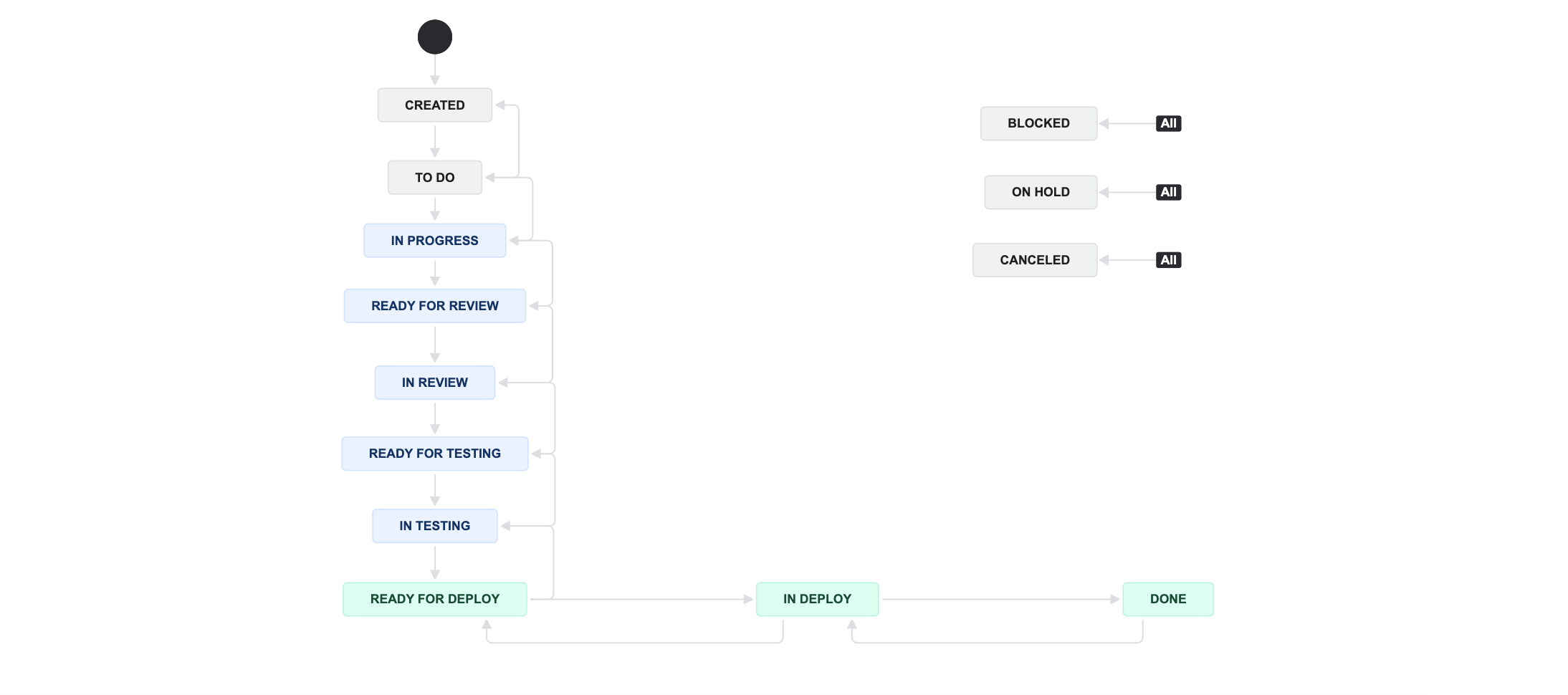
Task Lifecycle
The task lifecycle is a sequence of states through which a task passes, starting from its creation and ending at its completion.
There is no universal standard adopted by all companies. Each company can define its own task lifecycle that aligns with their processes and development methodology.
Below is an example of a task lifecycle that I use in my work. It is not mandatory and can be altered depending on the needs of the project.
The task lifecycle consists of the following states:
- Created - the task is created and not yet assigned to anyone. It lies in the general task list (Backlog).
- To Do - the task is ready to be executed, and an assignee has been assigned to it. It is waiting for its turn.
- In Progress - the task is being executed.
- Ready for Review - the task is completed and ready for review.
- In Review - the task is under review.
- Ready for Testing - the task has been reviewed and is ready for testing.
- In Testing - the task is undergoing testing.
- Ready for Deploy - the task has been tested and is ready for deployment.
- In Deploy - the task is in production.
- Done - the task is completed.
This is the sequence of states through which a task passes, starting from its creation and ending at its completion.
There are also states that can be added to a task at any stage of its lifecycle regardless of its current state:
- Blocked - the task is blocked and cannot be executed for some reason, usually when the execution of the task depends on another task that has not yet been completed.
- On Hold - the task is paused. For example, if a more prioritized task arises in the workflow.
- Canceled - the task is canceled. If the task is no longer relevant…